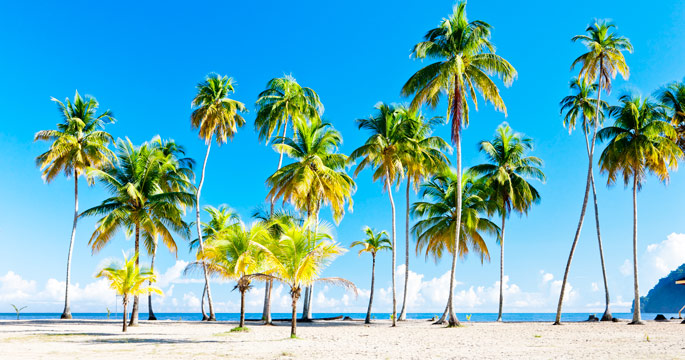Nature and culture coexist in lively fashion on these sister islands in the southern Caribbean. There are golden beaches to walk, colorful coral reefs to discover and lush, mysterious rain forests laced with hiking paths to explore. The tempo increases as you move downtown to dance to the hypnotic calypso rhythms of steel drums and sample a rich and savory cuisine filled with zesty spices.
1 Best Party on Earth
Trinidad’s Carnival isn’t just a celebration; it is a national rite of passage. Locals and visitors from around the world come together to immerse themselves in the oldest island-wide celebration in the Caribbean. Weeks of grand fetes lead up to a culturally mixed explosion of dance, costumes, food and music that take to the streets for an all-out two-day celebration that attracts visitors from around the world.

Revelers take to the street for Trinidad’s two-day celebration of Carnival, which takes place on the Monday and Tuesday before Ash Wednesday. Photo: iStock
2 Steel Pans
The birthplace of soca and limbo is also the home of steel pan music, which has become the island’s venerated national sound, now heard around the world from Cuba to Sweden. These iconic instruments have their humble beginnings in the 1930s, when drumming traditions brought from Africa became the inspiration to transform discarded fuel drums into a new form of musical expression.
3 Adopt a Turtle
Several beachfront hotels are working with marine biologists and researchers to ensure that the 12,000 nesting turtles that come to the shores of Trinidad and Tobago each year remain protected. Turtle season runs from March to September and visitors can join researchers and conservation workers to participate in educational and conservation programs and witness mother turtles nesting, and later watch hatchlings return to the sea.
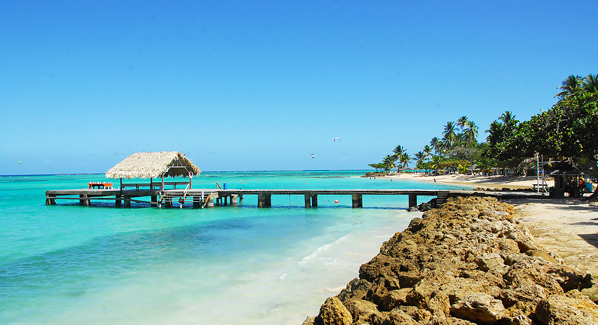
The pier and iconic thatch-roofed cabana at Tobago’s Pigeon Point Heritage Park is a well-known landmark on what is widely considered the island’s most beautiful beach. Photo: Trinidad & Tobago Tourism Development
4 Tobago’s Festivals
While the sister island of Trinidad gets all the attention during Carnival, Tobago also hosts some memorable festivals that showcase both the whimsical and historic aspects of the culture. The Heritage Festival celebrates the historic period of French influences. During two weeks of parades, dancing, singing, performances and feasts the island comes alive with spirits as costumed jumbies take to the streets. Tobago also hosts an annual Jazz Festival and Blue Food Festival honoring the root staple known as dasheen.
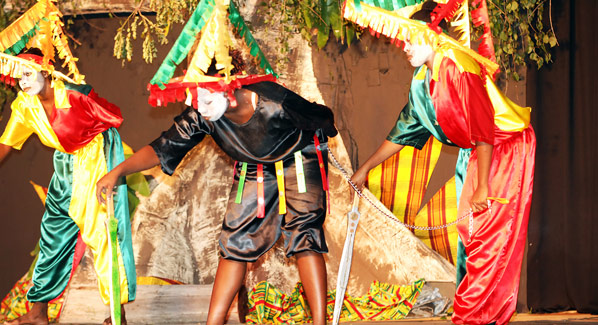
Interpretive dancers compete in the Folk Fiesta, which is part of the annual Tobago Heritage Festival. The event is one of several that showcase the artistry of folk music, dance and drums. Photo: Trinidad & Tobago Tourism Development Company
5 Culinary Melting Pot
Trinidad is the United Nations of flavors. Culinary traditions from France, England, Portugal and Spain mix with African and Middle Eastern flavors. Elements of Chinese and Indonesian cooking add to the mix, and most prominent of all are the tastes of East Indian, which take center stage on an island where 40 percent of the population has roots in Indian. Settlers from around the world brought with them seeds and cuttings from their homelands, all of which have been added to the mix.
6 Underwater World
Tobago’s coral reefs lure divers from around the world, who come to ride the nutrient-rich currents that attract manta rays and nurture multi-colored arrays of soft corals and sponges. Drifts along the island’s Atlantic shores are exhilarating, while the calmer waters of the Caribbean shore are home to shallow reefs and gardens of hard coral with swarms of bright-hued tropical fish.
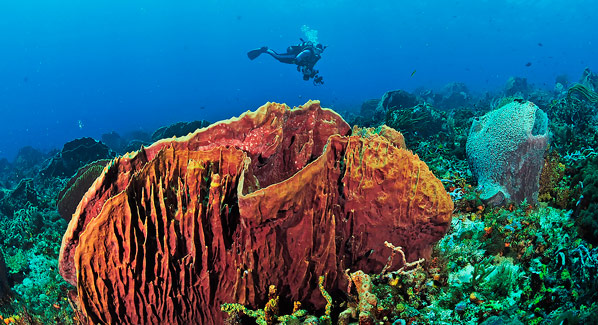
The coral reefs on Tobago’s Atlantic coast are washed by the nutrient-rich waters of the Guyana Current, which encourage sponges and soft corals to grow to enormous sizes. Photo: Trinidad & Tobago Tourism Development
7 Great Hikes
The wooded highlands of both islands offer rewarding hiking trails. On Trinidad, hikers follow the Paria River along the Northern Range to reach waterfalls at the river’s mouth. On Tobago, Argyle Waterfall is the island’s highest falls, and it can be reached by an easy 15-minute hike through the Caribbean’s oldest forest reserve.
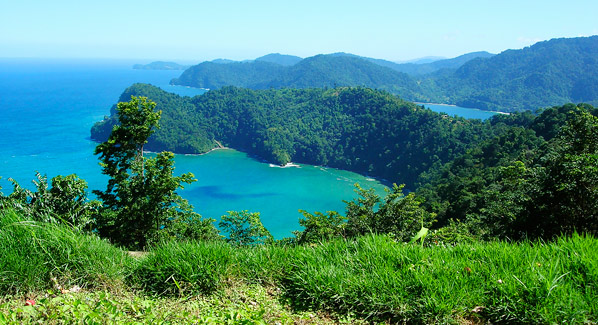
On Trinidad’s mountainous and wooded northern coast, a pair of tall headlands shelters the waters of Maracas Bay. The scenic drive to this site is a favorite day trip from the city of Port of Spain. Photo: iStock
8 Bird Lover’s Haven
With more than 425 recorded species, Trinidad and Tobago keep birders busy. On Trinidad a large swamp and mangrove at the Caroni Bird Sanctuary is the place to see the island’s national bird, the scarlet ibis. Also popular is the 270-acre Asa Wright Nature Center, and the Pointe-a-Pierre Wild Fowl Trust, which is a nature conservatory, dedicated to the breeding and reintroduction of various bird and waterfowl species to the wild. On Tobago the Grafton Caledonia Sanctuary, Main Forest Ridge Rainforest and Little Tobago Island all offer sightings of rare bird species.
9 On the Radar
Little sister Tobago remains a world apart from Trinidad, but it is now becoming one of the favorite new destinations in the Caribbean. Yet despite this growing popularity, the vibe is still laid-back, with long stretches of golden sands dotted by small fishing villages rather than resorts, and small farming towns where everyone knows their neighbor. A forest reserve runs two- thirds of the island’s length, protecting some of the Caribbean’s largest stands of old-growth rainforest.
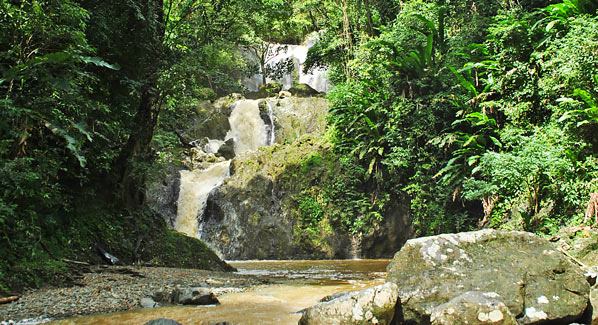
Tobago’s Argyle Falls flows from the mountains of the Main Ridge Forest Reserve, dropping 175 feet in a three-tiered cascade. An easy 15-minute walk brings hikers to the base of the falls. Photo: Daren des Vignes/ Trinidad & Tobago Tourism Development Company
10 Meals on Wheels
Immigrants arriving from the East fashioned iron griddles to bake traditional Indian roti bread, which has since evolved into the West Indian dish that is a complete meal, found throughout the Caribbean. In a West Indian roti, the bread is folded and stuffed with savory curry filling seasoned with garlic and onions. The curry can include goat, shrimp, chicken or mixed vegetables, and it is served at take-out food stands across the islands.

